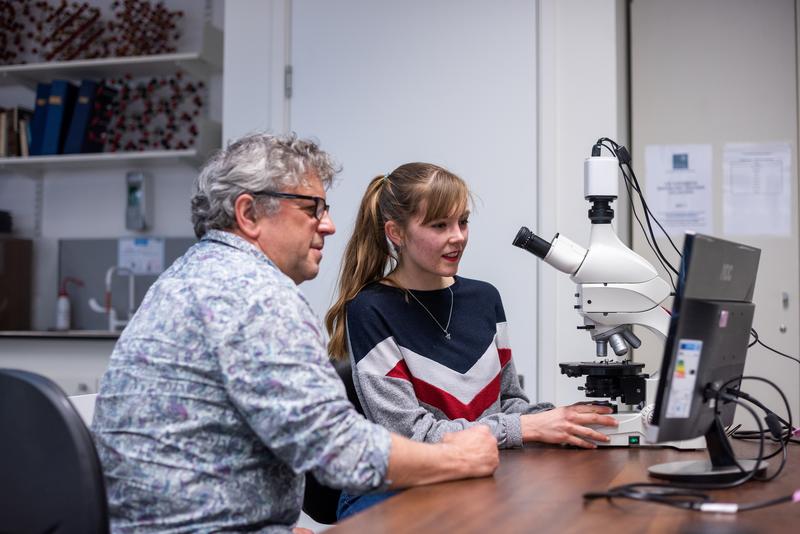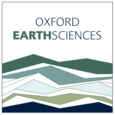Graduate Admissions
Research Courses
Earth Sciences focuses on the scientific understanding of Earth and other planets, embracing a large range of fundamental topics including the evolution of life, how climate has changed in the past and will change in the future, the nature of planetary surfaces and interiors, and the processes underlying natural hazards like earthquakes and volcanoes.
Oxford Earth Sciences accepts applications for DPhil study via three courses (DPhil in Earth Sciences, Intelligent Earth and ILESLA). Further information on each is given via the links below, including deadlines, eligibility, timelines and interviews.
Of these courses, only one (the DPhil in Earth Sciences) involves a direct application to the Department. The remainder involves a transfer to the Department after completion of programme-specific training and project selection.
We encourage you to apply to the DPhil in Earth Sciences in addition to your Intelligent Earth/ILESLA application (you will need to apply separately to each course). More information about applying to multiple courses and application fee waivers can be found on the main University webpages.
The Department also accepts applications for Masters study via the MSc by Research in Earth Sciences. Further information is available via the link below.
General information on graduate admissions for the University of Oxford can be found on the main University webpages.
We do not offer a taught masters course, though our undergraduate course includes a fourth year.
Apply
Projects and Supervisors
A list of projects proposed by supervisors can be found on our Projects page.
Applicants can also devise projects of their own in consultation with potential supervisors. You must identify one or two potential supervisors and state their names in the ‘proposed supervisor’ field on your application form.
Please ensure you contact the project supervisor or a potential supervisor to discuss your project prior to application. This is essential if you are not applying to a listed project. A list of faculty and their contact details can be found on our People pages.

https://www.youtube.com/embed/Mnh299XkJes?si=XKs8n-snpP9m-xWL
Funding
Funding for graduate study in the Department of Earth Sciences can come from a number of sources. We also welcome applications from self-funded students.
Please note that funding deadlines can be sooner than the course deadlines and most are in January. If you are looking to seek funding to support your study please apply by the earlier deadline.
The following courses are associated with funded studentships. By applying to these programmes you are automatically considered for a funded place.
-
ILESLA (Interdisciplinary Life and Environmental Science Landscape Award) | Home | Funding Information
-
Intelligent Earth (AI for the Environment) UKRI CDT | Home | Funding Information
Applications to the DPhil in Earth Sciences will automatically be considered for the majority of Oxford Scholarships, if you fulfil the eligibility criteria and submit your graduate application by the relevant scholarship deadline (usually December or January). You may also wish to apply for this course if you have alternative funding, including scholarships, industry or government backing.
Some projects have attached funding, often from an external party or existing grant; this will be noted in the project advert.
A variety of support is available for UK/home and international students. Information on funding, scholarships and bursaries, living costs and other financial considerations can be found on the University Fees and Funding webpages - including information on Oxford funding, college funding and external funding. We encourage you to explore all your options before making an application.
Major Scholarships for Earth Scientists
This unique scheme offers around 130 new, fully-funded scholarships each year to academically outstanding graduate students across the University, as well as providing a lively and stimulating community of scholars.
Further information about the Clarendon fund can be found on the University website.
Applicants to the Department of Earth Sciences will automatically be considered for an Oxford-Radcliffe Graduate Scholarship. The Oxford-Radcliffe Graduate Scholarships were established in 2012 through an innovative matched funding initiative. Scholarships are awarded to applicants who have demonstrated excellent academic ability, who will contribute to the University’s ground-breaking research, and who will go on to contribute to the world as leaders in their field, pushing the frontiers of knowledge. The University contributes 40% of the funds for these scholarships, together with 60% from generous donations provided by numerous supporters of the University and its colleges.
The Oxford-Radcliffe Graduate Scholarships are unique to University College, supported by a historic £10m gift from a group of the College’s Old Members, the largest single gift received by the college in modern times. The benefactors are motivated to ensure that more talented graduate students than ever before will have an opportunity to work with both University College’s and Oxford’s leading academics to pursue their ambitions, contribute ground-breaking research, advance understanding and realise their full potential – regardless of their financial circumstances – focusing on today’s challenges and advancing tomorrow’s solutions.
Academic Futures is a series of scholarship programmes that will address under-representation and help improve equality, diversity and inclusion in the University’s graduate student body.
Further information about the Academic Futures Scholarships can be found on the University website.
Up to 30 scholarships are available across the University for UK Black and Mixed-Black postgraduate offer holders, to financially support them to pursue graduate study at Oxford. The Department of Earth Sciences is proud to be one of the funding partners for these scholarships.
To apply for the Black Academic Futures Scholarship, all you have to do is submit your completed graduate course application, including ethnicity information, by the January deadline and you will automatically be considered.
The Boise Trust Fund was established by Charles Watson Boise to support research on the antiquity and evolutionary origin of modern Homo sapiens and other hominins, with particular emphasis on the continued exploration of appropriate sites in Africa, and on the early migration of Palaeolithic communities. All applications should be in this field of research.
The Boise Trust Scholarship is open to applicants to the Departments of Anthropology, Archaeology, Biology, and Earth Sciences. The award is for up to 3.5 years and at present, offers:
- a maintenance grant at the current RCUK stipend rate per annum
- payment of fees (Home/Overseas)
- Research Support Grant of £5,000 per annum for the first three years of the scholarship (with the potential to apply for up to a further £3,000 per annum under the
small Boise Trust awards scheme).
Applications are made online using the standard University application form and must be submitted by the January deadline. All eligible applications received by the relevant department will be automatically considered for this scholarship.
For further information, please contact the Biology Trust Fund Administrator.
https://www.youtube.com/embed/HsCcq3XqnUM?si=pRFRR01gTo3h4ujR
FAQs
You may submit applications for multiple courses, and we recommend making a direct application to the Department alongside your application to ILESLA or Intelligent Earth, if appropriate. If you are unsure which course to apply for, it may be appropriate to apply to more than one. Please contact the Academic Office with any queries about multiple applications.
Full details on how to apply to one of our graduate courses can be found on the Applying to Oxford page on the University website.
If you wish to be considered for funding, most University administered scholarships require applicants to apply by the January deadline, but you should check the University’s Fees and Funding webpages to see if there is an earlier or later deadline for the funding you are applying for.
If you are self-funded or have funding from an external sponsor you may be able to apply later, but please check the individual course pages regularly as deadlines and notifications of closure of application windows will be posted there.
Each programme of study will have its own entry requirements and you should check the individual course pages on the University website for the programme to which you are applying.
See the application guide for results required.
Yes. You do not need to provide language test scores when you submit your application.
If you need to demonstrate your English language proficiency (according to the criteria in the application guide), you will have to provide evidence that you meet the English language requirement for your course if you are offered a place. Further details are in the application guide.
A transcript is a detailed record of higher education including programmes of study taken and standards achieved. Please submit all higher education transcripts as part of your application; if you are offered a place you will normally be required to submit an official transcript showing your final results before your offer can be confirmed and you are able to be enrolled.
More information about the transcript requirement is available in the application guide.
Completion of a previous degree (often to a specified standard) is a common condition of acceptance. Your educational institution should be able to provide an interim transcript which you can submit as part of your application.
As part of your application you will be asked to provide a research proposal which should be one to two pages in length. Your research proposal will be assessed for:
- the feasibility of successfully completing the project in the time available for the course (a maximum of four years)
- commitment to the subject, beyond the requirements of the degree course
- preliminary knowledge of research techniques
- capacity for sustained and intense work
- reasoning ability
- the ability to absorb new ideas, often presented abstractly, at a rapid pace.
Your research proposal should focus on your research interests and experience rather than personal achievements, interests and aspirations.
If you are applying for one of our advertised projects your proposal should outline how you would approach the project and carry out the research.
You may re-apply to a course you have applied to in a previous admissions year, but only once to any particular course in the same admissions year.
The only exception is that it may be possible to apply more than once to a research course (eg DPhil courses), if the applications involve significantly different research proposals and receive authorisation from the Department. Contact the Academic Administration Team at graduate.studies@earth.ox.ac.uk with your applicant number and second research proposal to request permission to submit a second application to the DPhil in Earth Sciences.
If the Department confirms that you can apply again, you must submit a separate application with all required supporting documents and references, and pay an application fee for the second application.
The University’s online application system does not permit an applicant to apply twice for the same course. Therefore, if the Department authorises a second application, it will inform Graduate Admissions and a link will be sent to you via email which enables you to create this new application.
If your application is unsuccessful in the current admissions cycle, you are welcome to apply again to the same course in the next admissions cycle (for study in the following academic year).
Please contact the Academic Administration Team at graduate.studies@earth.ox.ac.uk.




